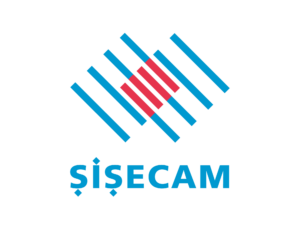In the highly competitive startup world, understanding the consequences of the key terms on a term sheet can make or break your deal. This formal but non-binding document is crucial because it lays the foundation for the venture capital investment relationship and the terms in the final legal contract.
Educating yourself is part of your responsibility as a startup founder. Not all terms are equally important, so knowing where and what to negotiate for is essential. If you’re confused by the terminology it may negatively impact the negotiations because you won’t know what elements to avoid.
Successfully negotiating the key terms generally makes it easier to negotiate the other less essential terms as well. In a typical fundraising process, startups can receive multiple term sheets from different investors. Understanding the terms will help you better compare offers as the terms may vary greatly.
Companies often heavily focus on valuation during negotiations but sometimes this is not the right approach. Other terms also affect the economics of financing, such as the size of the option pool and the liquidation preference. Plus, the right investors can often add immense value to a company. Even if these firms come in at a lower valuation, they may provide significant added value and influence the eventual successful outcome of your venture.
Here is a useful guide to help you understand the basic terms, how they affect you, and how to land the best possible deal for your startup.
What is a term sheet?
A term sheet is a summary of the proposed key terms of an investment in your startup. The terms outline the conditions between your company and your investors.
The term sheet serves as a blueprint for the formal legal paperwork later drafted by lawyers. Typically, you agree to confidentiality and not to enter into negotiations with other investors at the same time.
What you need to know are the key terms, how they affect you, and the best ways to negotiate them for your startup.
Understanding a term sheet’s key terms
A term sheet dictates who gets what financially and who gets to take legal action in any specific future situation. Among the key terms is a description of the valuation of the company, the price per share, and the economic rights of the new shares.
Usually, term sheets aren’t full of aggressive terms against the startup because most investors realize that creating a win-win situation is best for getting a good return on capital. But there are some cases where certain terms can result in a founder unwittingly giving up more control of their business than desired. This is why being aware of the potential consequences of specific terminology is vital.
Key terms and clauses: What you need to know
Shares in a company can be broadly categorized as common or preferred stock. Common stock is usually the form of equity given to founders and employees. Preferred stock gives certain investors special rights that are negotiable and included in your term sheet.
Economics and control
Economics and control refer to the percentage of the company the new investors will own based on the company’s valuation and the amount of money invested. This is a critical part of the term sheet because it lays out who owns what and how much each shareholder gets if the company sells. It also sets a foundation for future term sheet valuations.
When it comes to valuation some critical terms to understand include:
1. Pre-money and post-money valuation
A pre-money valuation refers to what the value of your company is before receiving funding. The post-money valuation is the estimated value of your company after receiving venture capital investment.
Here’s an example of how a pre-money and post-money valuation is calculated:
| Pre-Money valuation: | VC investment: | Post-Money valuation: | % Owned by VC investor: |
| $10m | $5m | $10m + $5m = $15m | $5m/$15m = 33.33% |
As a founder, you’ll need to aim for a valuation that is not too high or too low. If a valuation is too low, it can result in the unnecessary dilution of founder shares. If a valuation is too high, it can increase the pressure to perform and the difficulties of raising a subsequent round in the future.
The valuation is usually determined by many factors such as industry comparables, growth rate and traction, startup location, market, and the strength of the team. Experienced advisors will often encourage early-stage founders to choose the right investors offering a lower valuation over the wrong investors with a high valuation.
2. Liquidation preference
A liquidation preference is commonly considered one of the most important terms to look out for in the term sheet for preferred stock. When a VC investor is issued shares of preferred stock it grants specific rights, including the liquidation preference, which makes it more valuable than common stock. In the event of a liquidation, the preferred stock will have priority over common stock in receiving the distribution of assets.
- Straight (or non-participating) preferred
[Favors company] When the company is sold, the preferred stockholders can choose a liquidation preference with a liquidation multiple. This means that preferred stockholders are entitled to get paid back their entire investment (plus dividends) and to a multiple amount of their original investment (e.g., “2X multiple,” 3X multiple”, etc.) before the distribution of any proceeds to those with common stock.
Or the preferred stockholders can choose to convert their preferred stock to common stock and to be treated the same as the common stockholders (allowing them to share ratably in the proceeds).
- Participating preferred (double-dip)
[Favors investor] The preferred stockholders are entitled to the return of their entire investment (plus dividends) before the common stockholders get paid. However, the preferred stockholders will still be treated like common stockholders and share ratably in the remaining proceeds — effectively being paid twice.
For instance, if an investor invests $1 million in a company at a post-money valuation of $5 million, this gives him 20% ownership of the company. The company later sells for $10 million. The investor will initially get paid $2 million, and then 20% of the remaining $8 million for a total of $2m + $1.6m = $3.6 million.
- Capped (or partially) participating preferred
The preferred stockholders have the same rights as participating preferred, but their aggregate return is capped. Once they receive the capped amount they cannot share in the remaining proceeds with the other common stockholders. This is often seen as a compromise.
If your company is a runaway hit, liquidation preferences will matter less as your company valuation is far greater than the original amount the investor put in. In a more modest exit, the liquidation preference can greatly diminish the number of proceeds given to founders and employees. So, this is a term that should be carefully negotiated.
3. Conversion rights
The ability to convert shares of preferred stock into shares of common stock is called a conversion right. There are two main types of conversion rights including optional and mandatory rights.
Optional conversion rights are typically non-negotiable and allow an investor to convert shares of preferred stock into common stock, typically on a one-to-one basis. The investor’s interest in liquidation preference guides this process. This allows the investor to choose between getting their liquidation preference or participating in the proportional share of the proceeds.
Mandatory conversion rights are negotiable and require the investor to automatically convert shares of preferred stock into common stock through a process called “automatic conversion”.
4. Option pool size
An option pool is made up of shares of stocks reserved especially for employees. Usually called Employee Stock Option Pools (“ESOPs”) they help companies attract top talent to a startup and if the company goes public, employees are rewarded with stock.
In a term sheet, the ESOP is specified as a percentage of the post-money valuation. As a result, this often means that the founders are shouldering all of the dilution. The ESOP is taken from the founders’ stock. For example, the investor has 25% of the company’s shares and stipulates a 20% ESOP on the post-money valuation, so the founders are left with 55% of the company’s shares.
If your company is sold, all the unissued and unvested options would be canceled. Investors would share the additional sale proceeds proportionally with founders — even though those options were from the founders.
Typically ESOPs are about 10-25%, with different norms depending on your location. When creating an option pool, you don’t want to develop a massive one. This can reduce the chance of unallocated equity. Top-ups can occur later if needed at future rounds.
5. Dividends
A dividend is a payment made up of a distribution of profits from a corporation to its shareholders. A cumulative dividend is a right connected to certain preferred shares. It is calculated annually and carried forward to the next year if the company can’t pay. Non-cumulative dividends don’t have unpaid dividends carried over from past years which makes them the best for founders. Not all investment rounds involve dividends.
Investor rights and protections
Investor rights and protections refer to clauses that are used to protect an investor’s investment, such as:
1. Anti-dilution rights
Anti-dilution rights shield preferred investors in the event of a down round (lower valuation than what they invested in). When a company’s valuation decreases from different rounds of financing preferred shareholders are protected by giving them additional shares. These provisions can be devastating to the founders.
There are typically two types of adjustments:
- Full ratchet
This is rare as this type of adjustment is extremely disadvantageous to the founders and other common stockholders. The adjustment brings down the conversion price to the lowest price at which the stock is issued after the issuance of the investor’s preferred stock, regardless of the number of shares.
- Weighted average
This takes into account both the lower price and the actual number of shares issued in the down round via a formula. There are two types of weighted-average formulas: broad-based (takes into account fully diluted capital stock including all issued and unissued stock such as options) or narrow-based (only outstanding capital stock). A broad-based approach is typically a smaller percentage of a larger amount, which is more favorable to founders.
2. Pro-rata rights
A pro-rata clause gives an investor the option to participate in future financing rounds to keep their percentage ownership in the company that would otherwise be diluted. Pro-rata rights are essential to early-stage rounds and are generally positive factors in term sheets.
Pro-rata rights are typically given to larger investors in rounds and aren’t always enforced. Investors can choose to take up their pro-rata rights in later rounds depending on their strategy.
3. Right of first refusal (ROFR) and approval of sale
Having a right of first refusal clause requires that all current shareholders are notified and have the right to buy stock from an investor who is selling. Along with an approval of sale clause, this prevents secretive transfers of stock from occurring, such as an investor selling your stock to a competitor.
4. No-shop clause
A no-shop agreement is typically part of the final term sheet once you’ve chosen your lead investor among your available options. Part of the process of negotiating the final term sheet with this investor is agreeing to commit to getting a deal done.
Founders may want to bind the no-shop clause to a time period of around 30-60 days to make the commitment mutual. The founder agrees not to shop the deal while the VC investor agrees to get things done within a reasonable time period.
Governance management and control
Governance management and control set the rules concerning who’s in control of the company along with voting rights, board rights, information rights, and founder vesting.
1. Voting rights
Voting rights consist of the shareholder’s right to vote on company policy. This term sheet clause divides voting rights across various instruments (A, B, Preferred) and sets out for which corporate action a majority vote is needed.
Depending on how the majority votes, it gives the holder of the instrument the ability to block certain actions such as liquidation of the company, payout of dividends, revisions to the number of board members, and annual spending budgets, and amendments to the charter or bylaws.
2. Protective rights
These are provisions that protect investors by giving them the right to block or veto certain actions, even those authorized by the Board of Directors. The consent of a percentage of the preferred stockholders is required before moving forward. This helps protect investors from the majority stockholders.
- Standard protective provisions
These provisions are viewed as standard and can include a sale of the company or a similar liquidation event, amendments to the company’s Certificate of Incorporation or bylaws to change the rights of preferred stock, increases or decreases in the shares of preferred or common stock, the issuance of any equity security having a preference over preferred stock, redeeming or purchasing preferred or common stock, payment of dividends from shares of any stock, and any revision in the number of directors of the company.
- Non-standard protective provisions
Some investors may desire extra items beyond the standard provisions. These non-standard provisions may include acquiring debt of more than $100K, hiring, firing or changing the compensation of executive officers, entering into a transaction with a director, executive, or employee of a company, changes to the principal business model, and purchases of assets of another entity.
If you have strong enough leverage, founders can negotiate to push back or knock out most of the non-standard provisions.
3. Board rights
The Board of Directors is a group of people who are selected to represent the shareholders’ interests in the company. The board typically establishes corporate management policies and enacts major decisions.
After a funding round, typically there is a “balance” in which neither the investor nor the founders control the board. In a five-member board, two directors will be appointed by the investors and two by the founders. The remaining director would be independent. However, founders in “hot” startups can more easily negotiate to retain control.
The company’s bylaws can set the structure of the board and the number of meetings, which some investors might try to adjust to take more control over the board. Be aware of this risk because if you lose control over the board, you can also lose control of your company.
4. Information rights
Information rights demand that you share the company’s financial status regularly with investors. Quarterly management reports and detailed annual financials are usually required after the end of the fiscal year.
5. Founder vesting
Founder share vesting makes it difficult for a founder to abandon a company by placing shares at risk. If the shares are returned this gives the company the chance to find a suitable replacement. Founders should negotiate a vesting program that works in their interest, such as excluding part of their holding from the agreement.
Exits and liquidity
The terms that govern exits and liquidity describe what happens in the event of a sale and shareholder rights during the process. Terms to look for include:
1. Drag-along and tag-along rights
If a sale of the company happens, drag-along rights prevent minority shareholders from blocking the occurrence if it was approved by the majority shareholder or by a collective majority. This can be helpful to the minority shareholder as well because it ensures that the same deal is offered to all parties.
Tag-along rights protect the minority shareholder further by giving them the right to join in any action with the majority shareholder. Often majority shareholders uncover more favorable deals from which the minority shareholder would be denied if it weren’t for this provision.
2. Redemption rights
The redemption clause can have a potentially negative impact that has the capability to create a liquidity crisis for startups. Using the clause, investors can demand redemption of stock within a certain amount of time.
Management may be forced to quickly sell the company to redeem the funds or petition shareholders to provide the funding in a rushed financing round. This is often resolved by the company paying the redeeming party the greater of fair market value and the original purchase price plus interest.
Term sheets and valuations: How to be a smart negotiator
For startup founders, the term sheet negotiation is about raising capital from VC investors while maintaining as much control as possible and limiting risks. Depending on what rights they push for or don’t, you can get a good feel for who your investor is and where they stand.
Surprises should be unlikely if your startup is raising a round from a well-known venture capital fund. There may be more legal issues to straighten out if you’re dealing with a late-stage private equity investor or a new corporate investor.
Remember that your investor will have a fundamental role in the development of your company, so do more research than just uncovering how much funding they can invest. Think of the process of negotiation as a two-way due diligence operation.
Top red flags to look for in a term sheet
Certain terms have implications that may not be founder-friendly. It pays to get objective advice from a lawyer with a background in this area. Your investors’ recommendations don’t necessarily have to dictate who you hire. Make sure you get a lawyer that can catch provisions that could have negative unintended consequences for your startup.
Meanwhile, here are some important not so founder-friendly terms to look out for:
- Protective provisions – These provisions can limit how much debt you can have without the consent of VCs, place restrictions on increasing authorized shares to take on new funding or give to employees, and add revisions to the certificate of incorporation.
- Full ratchet anti-dilution – This protection can wipe out common shareholders in a down round. A down round is when a company’s valuation decreases in consecutive funding rounds. A broad-based weighted average is the most founder-friendly form of anti-dilution followed by a narrow-based weighted average.
- Cumulative and PIK dividends – Cumulative dividends essentially guarantee investors a certain level of return, which is not standard for early-stage deals. Payment-in-Kind (PIK) dividends increase the liquidation preference for preferred stock and dilute the founder’s control over time. When it comes to dividends, the word “noncumulative” is the most founder-friendly language to look for.
- Participating preferred stock – This type of stock is not considered the standard so founders can make a case against it in negotiations. These participation rights heavily favor preferred stockholders.
- Anything above a 1x liquidation preference – If the preferred stock has a 2x liquidation preference, this guarantees that investors get double their money back before common classes of stock can receive anything.
Why some deals fail after a term sheet is signed
Many types of deals can miss the mark at any stage of the process. Never assume that a great valuation equals a great term sheet. You can create a win-win situation for both VCs and founders by keeping your request in line with your industry and your company’s stage of development. Even if VC investors are willing to throw funding at a product until it meets expectations, it’s up to the company to not fall short of its promises.
Where to find a sample term sheet template
There are numerous sources online for viewing sample term sheet templates. The National Venture Capital Association (NVCA) is a public policy advocate for entrepreneurs and the venture community and is a leading resource for venture capital data and education. This may be a good place to start for finding a general term sheet template depending on your particular situation.
If you’re looking for a Series A term sheet template, Y Combinator offers a one-page term sheet that covers everything and shortens the legalese to be more user friendly. This became common over the last ten years as investors sought to standardize the process to make it easier, faster, and friendlier.
Final considerations
It’s important to keep in mind that the fundamental goal of a startup is to have a sustainable and scalable business model that can raise consistent capital from VC investors. If you don’t have this, there’s no point in raising millions because venture capital can’t save your startup alone. Founders’ goals should be to retain as much control as possible while limiting risks.
Choosing the right long-term investment partners can also significantly influence the outcome of the investment as their involvement doesn’t end after the check is cashed. When founders are armed with knowledge, they can not only avoid pitfalls but also use term sheets as protective measures for their interests.
Digify can help you manage confidential company information for fundraising, due diligence, and investor updates. You can use Digify’s document security feature to send pitch decks with tracking features, so that you can better gauge the interest of your investors and follow up in a timely manner. Digify’s virtual data rooms are also used by many startups (see examples here) and VC/PE funds for their due diligence to close large rounds. See for yourself if Digify’s document security and data room services are right for your needs with a 7-day free trial.











